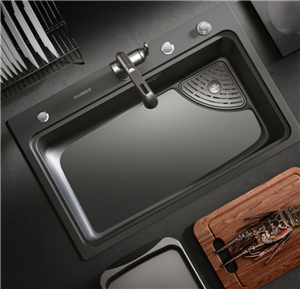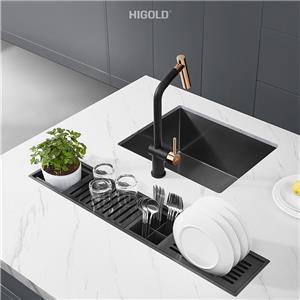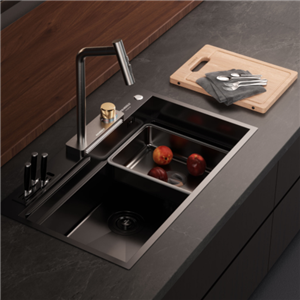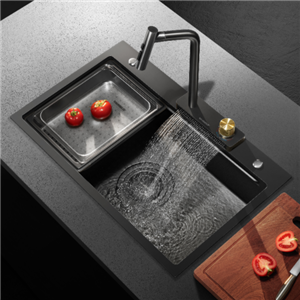Sink knowledge | Stainless steel sink maintenance and care
The Importance of Choosing the Right Sink
The sink is the heart of the kitchen. Statistically, among all kitchen appliances, the kitchen sink has the highest usage rate. More than 65% of the time spent on preparation and cleaning before and after meals is directly related to the kitchen sink. Therefore, choosing a kitchen sink that is aesthetically pleasing, performs well, and remains clean is of great importance in creating a comfortable and cozy kitchen environment.

Guide to Correct Sink Maintenance
1. Clean the sink immediately after use, wipe it dry, and store it. Try not to let water droplets remain on the sink surface, as hard water can cause float rust, while water with high mineral content can produce a white film.
2. If mineral deposits form at the bottom of the sink, they can be removed with diluted vinegar and then rinsed with water.
3. Do not let hard objects or rusty items come into contact with the sink for extended periods.
4. Do not leave rubber mats, wet sponges, or cleaning pads in the sink overnight.
5. Be aware that household products containing fluoride, bleach, food, and cleaning items containing silver or sulfur and hydrochloric acid can potentially harm the sink.
6. Be cautious of the corrosive gases released by bleach or chemical cleaners stored in cabinets that can corrode the sink bottom.
7.If chemicals or soldering flux come into contact with the sink, rinse it immediately.
8.Do not leave pickles, mayonnaise, mustard, or salted foods in the sink for extended periods.
9.Do not use iron rings or rough cleaning materials to clean the sink.
10.Any incorrect use or improper cleaning method can damage the sink.
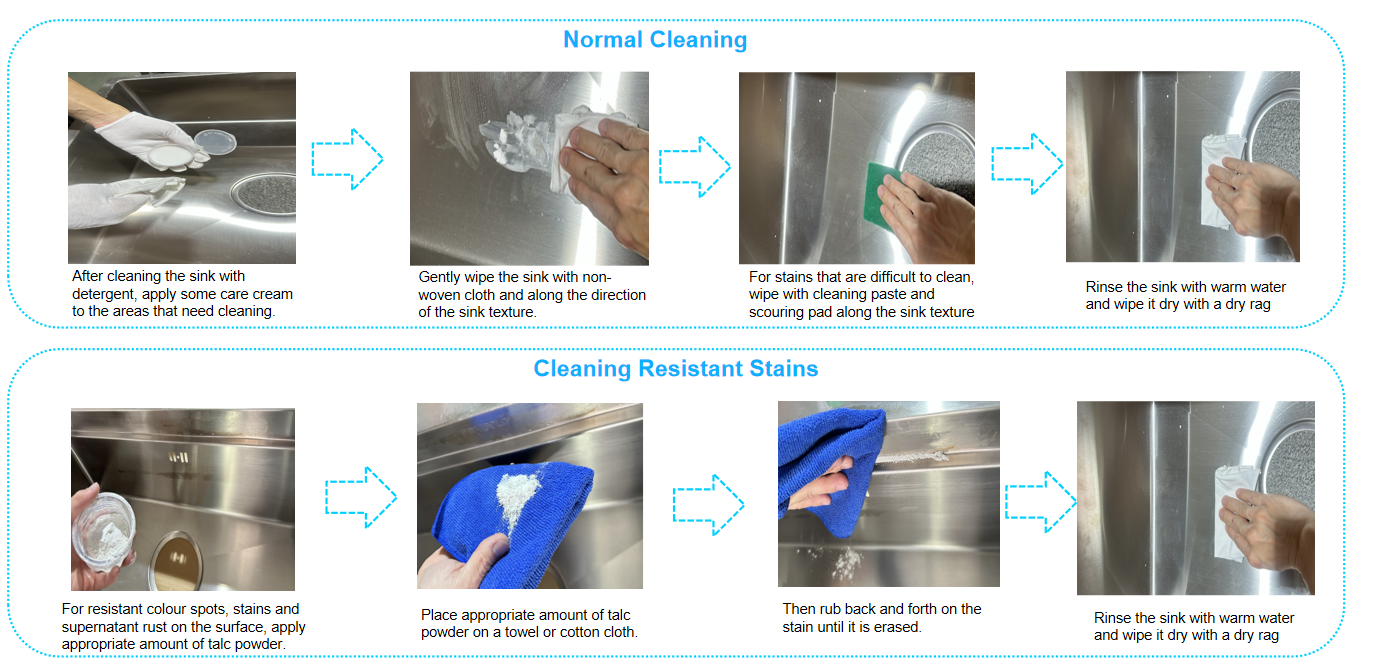
Correct Sink Care
1. Before using the sink for the first time in a newly renovated home, run water for 5-10 minutes to drain water containing rust-inducing substances from the pipes, and wipe down the sink surface with a soft cloth. It's best to test the water twice or three times over consecutive days to ensure all rusty water is drained. → Related reading: Sink buying guide
2. Ask the installer to wrap the sink with plastic after installation and remove the wrap only when the renovation is complete.
3. Avoid letting soft iron, hard objects, or rusty items come into contact with the sink for extended periods. Do not use strong acids or alkalis to clean items in the sink. After each use, thoroughly clean the sink and wipe it dry with a cloth.
4. If a film of rust appears on the sink surface, wipe it away promptly with talcum powder, rust remover, or 300-grit sandpaper. (For removing rust spots with talcum powder: Put a small amount of talcum powder into the dry sink, and wipe the affected area with a clean, soft cloth); (for rust remover: Use a clean, soft cloth to gently wipe the affected area with a small amount of rust remover); (for 300-grit sandpaper: Fold a corner of the sandpaper into a small angle and wipe the affected area).
As with any product, proper care is necessary. If you follow the above practices, your stainless steel sink will remain clean and fresh, and it will certainly be a great partner for your family to create delicious meals.

Why Stainless Steel is the Best Material for Sinks
1. Sinks are long-lasting products - Stainless steel kitchen sink is extremely durable and does not deteriorate over time.
2. Sinks are most frequently in contact with water - Stainless steel kitchen sink is not corroded or rusted by water.
3. Sinks often deal with hot pans and hot water - Stainless steel kitchen sink has heat resistance and does not melt or catch fire.

